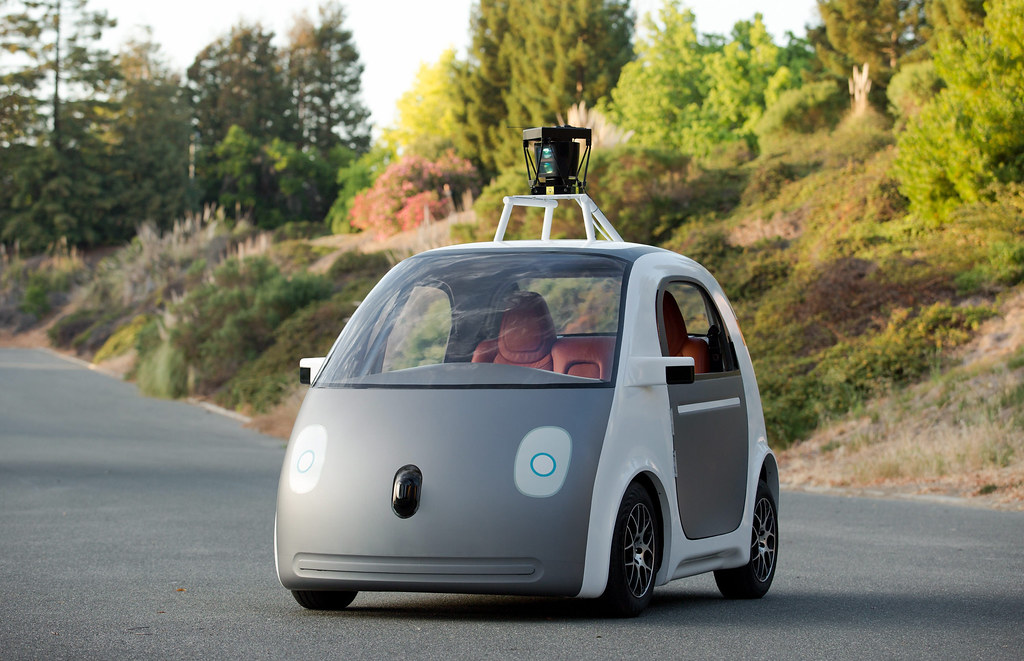Self-driving cars have been talked about for close to one hundred years since the invention and thought behind autonomous vehicles. The intention of driverless cars is to reduce the major issue that is human error. The first try at autonomous vehicles was in 1925 by a man named Norman Bel Geddes, an electrical engineer from New York. The car was a very distant prototype, remotely controlled instead of fully autonomous unlike the cars we have nowadays which are guided by radar and hundreds of cameras. This invention sparked the question of if humans should be wasting money on multiple vehicles when they can just buy one that can commute all members of the family to their desired place. The thought made people realize the pollution and danger millions of cars on the road are causing and how to fix it through driverless cars. But how has all of this changed the way we view cars? and how do autonomous vehicles actually work?
Driverless cars of today are most if not all fully electric vehicles and there is a reason. The reason why is because the battery can keep a stable flow of power that a combustion engine can not achieve. The battery power’s the electrical components and sensors that make up a driverless car. Many driverless cars use a system called “LIDAR” short for Light Detection and Ranging. This system uses a “rotating laser, usually mounted on the roof, that continually scans the environment around the car” that enables the computer to see where the car is based on LIDAR in a 360 degree 3D view (Gibbs). The software which is the bulk of the mechanics that make the car drive itself uses the LIDAR image and differentiates between cars, people, bikes, animals, and other objects. It also scans the road surface and conditions to build a 3D mapping image of the road. It uses this 3D model map to navigate through crowded and unpredictable scenarios it will encounter on the road, similar to how we encounter them but viewed through what “it” sees. Driverless cars have come a long way but they still need to be perfected if we are going towards a fully autonomous driving lifestyle.
The problems however, are a major issue in the path towards fully autonomous vehicles of the future. The issue is of an ethical dilemma “Unlike a human who reacts instinctively in an emergency, an autonomous car will have to calculate and choose the appropriate response to each scenario, including possibly a choice between killing its occupants or other people” this decision puts you and other people’s life in the hand of a autonomous mind that has no morals or emotion programed into its software and limited data to base its decision on (Gibbs). The human survival instinct and emotional decision making is a feature we have and is not possible to be replicated into a machine, yet. Until this happens fully autonomous vehicles will have this decision-making issue until it is addressed. The other issue facing driverless cars is a legal one “Legislation must also be changed before self-driving vehicles will be permitted on public roads beyond small tests, while insurers must decide who pays when an autonomous car inevitably has an accident” who is at fault and blame when an autonomous vehicle crashes? Do we blame the manufacturer or just faulty machinery? There are too many questions to even think about putting driverless cars into mass production. Further tests need to be made and software needs to be updated daily to ensure the safety of the driver and the ones around them.
Self-driving cars are still being tested and implementing new software frequently. Driverless cars are soon coming to our lives with breakthroughs in technology and software being achieved yearly. I believe that in the near future that being 10, 20, or 30 years from now we will be driving side by side with fully autonomous cars by choice or forced into it legally with the ban of human drivers. I personally would not trust a machine with my life in any way shape or form especially in the most dangerous task of our daily life, driving. This new technology is being put to use in Elon Musk’s new Tesla autopilot feature and so far is working as planned. The autopilot software is upgraded and advanced through frequent updates to ensure the safety of drivers. The push for driverless cars is taking a toll on if it’s really necessary and safe to adapt autonomous cars to our daily lives. The major issue of unpredictability “But it’s this collision where the biggest challenges for technology firms lie, encouraging adoption of rapidly developing new technology for a population that is quirky, unpredictable and, in turn, both skeptical and overtrusting” this autonomous software is too dangerous and needs to be thoroughly tested before the mass production of driverless cars into our world (Solon). I do not see driverless cars as a safe and reliable form of transportation and we should rethink how we design driverless cars and to ensure the safety on the road.
“Google Self-Driving Car” by smoothgroover22 is licensed under CC BY-SA 2.0.










